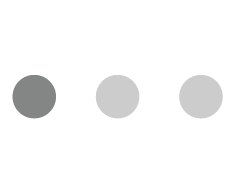In today’s digital landscape, where users are bombarded with options, creating a product that stands out is more crucial than ever. A highly effective method for accomplishing this is user-centered design (UCD). This approach places the needs, preferences, and constraints of end-users at the forefront of every stage of the design process. In this blog, we will delve into the importance of user-centered design and its potential to create more successful products.
What is User-Centered Design?
User-centered design is a design philosophy that focuses on understanding the users for whom the product is being created. This involves engaging with users through research, prototyping, and testing to ensure that their feedback shapes the final outcome. The goal is to create products that are not only functional but also enjoyable and intuitive to use.
Why is User-Centered Design Important?
1. Enhances User Satisfaction
When users feel that a product has been designed with their needs in mind, their satisfaction increases. User-centered design helps create a seamless experience, reducing frustration and enhancing overall enjoyment. Satisfied users are more inclined to become loyal customers and champions of your brand.
2. Improves Usability
UCD focuses on usability, ensuring that products are easy to navigate and interact with. By involving users in the design process, designers can identify potential pain points and areas for improvement. This leads to more intuitive interfaces and features, which ultimately enhance the overall user experience.
3. Reduces Development Costs
Investing in user research and testing early in the design process can save significant costs in the long run. Identifying issues and areas for improvement before launching a product minimizes the risk of costly redesigns and fixes after the fact. By prioritizing user feedback, teams can create more effective solutions from the start.
4. Encourages Innovation
Understanding users deeply can spark innovative ideas and solutions. When designers empathize with users, they are more likely to uncover unmet needs and creative ways to address them. This can lead to groundbreaking features that set a product apart from competitors.
5. Fosters Collaboration
A user-centered approach encourages collaboration among team members, stakeholders, and users. By bringing diverse perspectives together, teams can create more holistic and effective solutions. This collaborative spirit fosters a culture of empathy and understanding, which is essential for successful design.
How to Implement User-Centered Design
1. Conduct User Research
Start by gathering data on your target audience. Use surveys, interviews, and observational studies to understand their behaviors, preferences, and pain points. This foundational research is crucial for informing your design decisions.
2. Create Personas
Create user personas that reflect the different segments of your target audience. These personas should encapsulate user goals, motivations, and challenges. They serve as reference points throughout the design process, helping to keep the focus on user needs.
3. Prototype and Test
Create low-fidelity prototypes to visualize your ideas. Involve real users in testing these prototypes to gather feedback. Iteratively refine your designs based on user input to ensure that the final product resonates with your audience.
4. Implement Feedback Loops
Establish mechanisms for ongoing user feedback, even after launch. Regularly update your product based on user insights to keep it relevant and effective. This ensures that your design evolves in line with user needs over time.
5. Measure Success
Use metrics to evaluate the effectiveness of your user-centered design efforts. Track user engagement, satisfaction, and retention rates to determine whether your design choices are yielding positive results.
Conclusion
User-centered design is more than just a buzzword; it’s a fundamental approach that can drive the success of your products. By prioritizing the needs and experiences of users, you can create solutions that are not only functional but also enjoyable. As the digital landscape continues to evolve, adopting a user-centered mindset will be essential for businesses seeking to thrive in a competitive environment. Remember, when you put users first, everyone wins.
Knowledge thats worth delivered in your inbox







